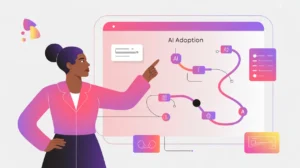Importance of Portfolio Approach to Innovation
A Portfolio Approach to Innovation involves managing multiple innovation initiatives simultaneously, rather than betting everything on a single project. It treats innovation as a balanced portfolio of experiments, pilots, and scaling efforts, much like an investment strategy. Its importance today lies in the uncertainty of AI and digital transformation, where some initiatives succeed while others fail, and diversification reduces risk while maximizing learning.
For social innovation and international development, this approach matters because mission-driven organizations often face complex, rapidly changing environments. By building a portfolio, they can pursue ambitious ideas while safeguarding against overcommitment to unproven solutions.
Definition and Key Features
The portfolio approach borrows from investment management, emphasizing diversification, risk assessment, and dynamic reallocation of resources. In innovation, portfolios may include short-term pilots, long-term research, incremental improvements, and transformative bets. Donors and multilateral organizations increasingly encourage portfolio thinking to spread risk and accelerate system-wide learning.
It is not the same as project-by-project management, which evaluates initiatives in isolation. Nor is it equivalent to innovation labs that generate ideas without structured oversight. A portfolio approach emphasizes strategic coherence across multiple efforts.
How this Works in Practice
In practice, a humanitarian agency might maintain a portfolio that includes experimenting with AI-driven logistics, scaling digital identity platforms, and sustaining legacy systems. Education programs may balance pilots of adaptive learning apps with broader teacher training initiatives. Portfolios allow organizations to reallocate resources when evidence shows which initiatives are delivering impact and which should be discontinued.
Challenges include ensuring leadership alignment, measuring success across diverse initiatives, and avoiding fragmentation of resources. Clear criteria for entry, continuation, and exit are essential, along with mechanisms for cross-learning across projects.
Implications for Social Innovators
The portfolio approach is particularly relevant for mission-driven organizations. Health programs can manage innovation portfolios spanning digital diagnostics, predictive analytics, and supply chain optimization. Education initiatives can experiment with AI tutors while sustaining infrastructure investments. Humanitarian agencies can run portfolios that test crisis-mapping tools, payment systems, and beneficiary engagement platforms simultaneously. Civil society organizations can adopt portfolio thinking to spread advocacy and technology investments across multiple strategies.
By adopting a portfolio approach, organizations balance ambition with resilience, ensuring innovation efforts are both bold and responsibly managed.







